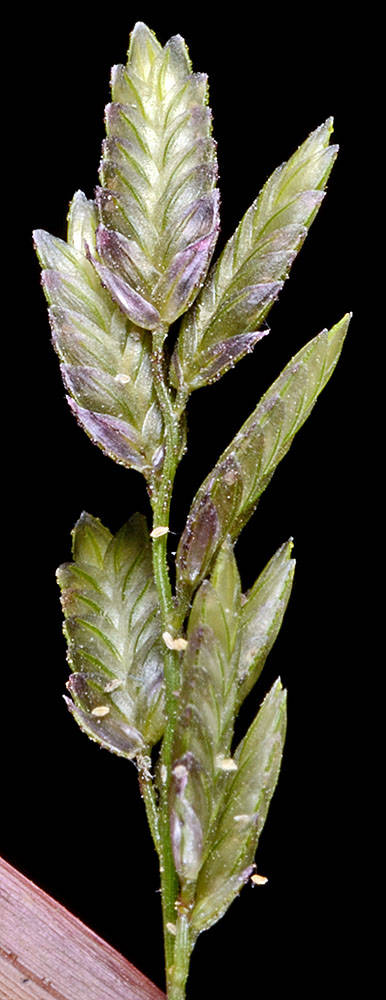Eragrostis lugens
Eragrostis
lovegrass
sometimes rooting at the lower nodes, sometimes branched above the base.
sheaths open with tufts of hairs at the tops;
hairs 0.3–8 mm;
ligules usually membranous and ciliate; the cilia sometimes longer than the membranous base, occasionally consisting of hairs only or of non-ciliate membranes;
blades flat, folded, or involute.
terminal and sometimes axillary open to contracted panicles.
laterally compressed; (1)2–60 florets, cleistogamous spikelets occasionally present on the axillary or terminal panicles;
disarticulation below the fertile florets; the glumes sometimes deciduous; the paleas sometimes persistent; acropetal or irregular.
2, usually shorter than the adjacent lemmas, 1(3)-veined;
tips obtuse to acute; awnless.
brown, often translucent.
glabrous or sparsely pubescent.
glabrous; (1)3(5)-veined, usually keeled;
tips obtuse to acute; awnless or mucronate.
2-keeled; the keels usually ciliate.
2–3.
Eragrostis lugens
Eragrostis
Temperate, subtropical, and tropical regions worldwide. Approximately 350 species; 8 species treated in Flora.
Several of Oregon’s Eragrostis species have glands on the culms, leaves, inflorescences branches, or spikelets. The glands may be discolored patches, or they may be “saucer-like” with raised edges. The glands give some species characteristic odors.
Barbara Wilson, Richard Brainerd, Nick Otting
- Local floras:
CA,
OR,
WA
- Local Web sites:
CalFlora,
CalPhotos,
Flora NW,
PNW Herbaria
WildflowerSearch
iNaturalist (observations)
USDA Plants Database
- LBJ Wildflower Center
- SEINet
- Plants of the World Online
- Encyclopedia of Life
- Wikipedia
- Google Image Search


